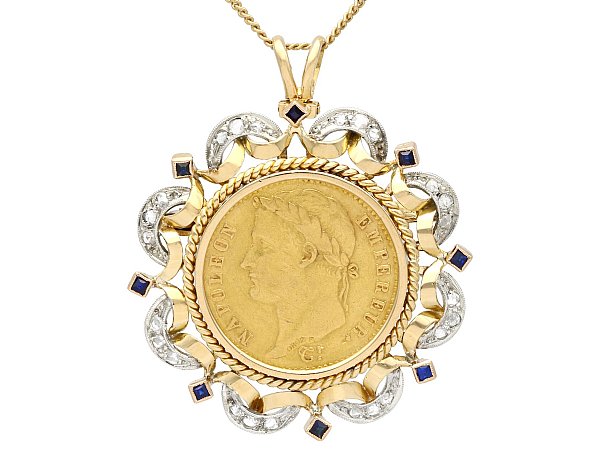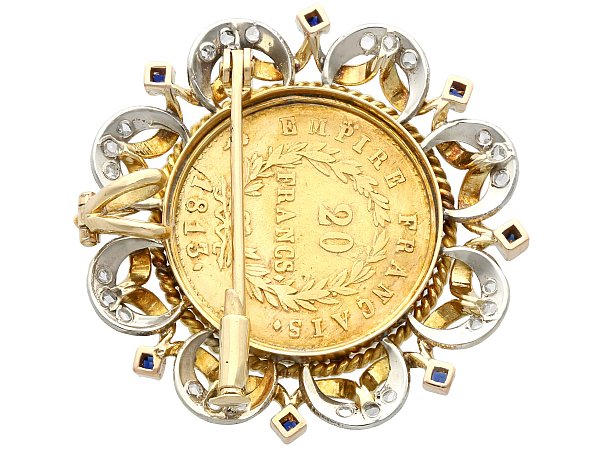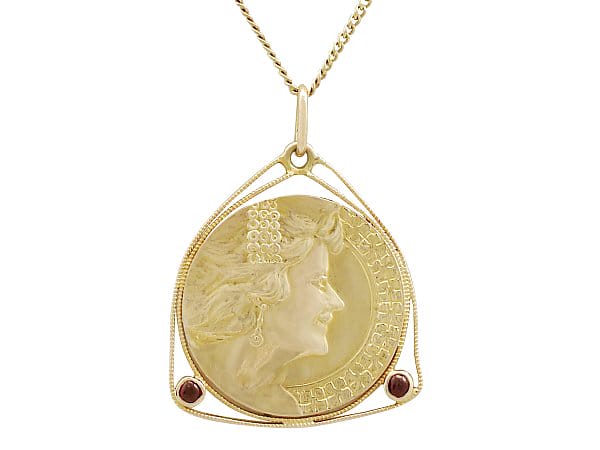The History of Coin Jewellery
The history of coin jewellery, also referred to as numismatic jewellery, dates back to the ancient civilisations of the world. Like many aspects of contemporary jewellery, one of the original sources of coin jewellery was Ancient Egypt. Archaeological findings of coin jewellery can also be traced to Etruscan, Greek, and Roman civilisations. The artefacts found in Ancient Egyptian tombs, however, are typically in the best condition, due to their burial customs.
During these ancient times, it was commonplace for those wealthy enough to wear coins as elements of their jewellery. Examples of numismatic jewellery from these times are preserved today in museums around the world. Many existing examples of ancient coin jewellery come in the form of pendants, often featuring multiple coin charms along the chain – or beaded string – of the necklace itself.
The longevity of coin jewellery’s popularity is robust, as evidenced by the centuries of coin jeweller spanning different periods, with coin jewellery being heavily present in both. Excavations of numerous Roman sites, both on the continent of Europe and ones originating in the Middle Ages of England both heavily featured both coins and jewellery featuring coins. Some of the coins have been helpful towards identifying more information about the age of the jewellery itself. Some pieces of 4th century jewellery feature coins that have been dated to be even 100 years older than the rest of the piece. Artefacts such as these demonstrate the popularity of coin jewellery as pieces of art rather than as practical pieces of currency.

The Renaissance Period
Coin jewellery was popular in the Renaissance period as well. The history of coin jewellery shows us that the ancient civilisations previously explored had influenced the crafting of a lot of jewellery in the renaissance period. It was a popular practise for the wealthy to have portraits of themselves commissioned in the style of a coin. This artistic impression of a personalised coin was then set as part of a pendant or ring, similar to a signet ring.
These examples of coin jewellery are closer to being artworks than they are accessories. Not only were these pieces crafted in the image of the buyer, but they were then set in gold, often accompanied by precious and semi-precious gemstones. Today, most surviving examples of these coin artefacts are enshrined in museums, being too delicate and worn to be used for their original purposes.
Cut coin jewellery can be found from the renaissance period onwards. While most coin jewellery features whole coins, some especially elaborate pieces feature cut coins. In this practise, the figure on the coin is cut using a precision jeweller’s saw, and then separated from the rest of the coin. At this point, precious metals are used to emphasise designs on the coin itself. Next, the figure from the coin is placed back into position, now creating both colourful and textural contrast.
The History of Coin Jewellery in the 19th Century
Revered jeweller, Castellani, spearheaded the jewellery element of the archaeological revival movement in the mid-19th century. At this time, a variety of ancient ruins had recently been discovered, and there was a global interest in all things ancient. Jewellers at this time acquired coins through auctions of a variety of artefacts found in these archaeological digs. The coins they bid for were then used over a matter of decades to create unique and highly valuable jewellery.
Coin jewellery’s increased in popularity again in the 20th century. In the 1970s, fashion magazines began to feature coin-themed jewellery. This jewellery – like the renaissance pieces – didn’t feature genuine currency. Rather, the coin’s shape and size were exaggerated, and the staple portraiture was incorporated. In the 1990s, this same exaggerated form was used to create coin-themed charm bracelets. More recently, numismatic jewellery has once again become a focal point of fashion, featuring on pendants, bracelets, and rings.




